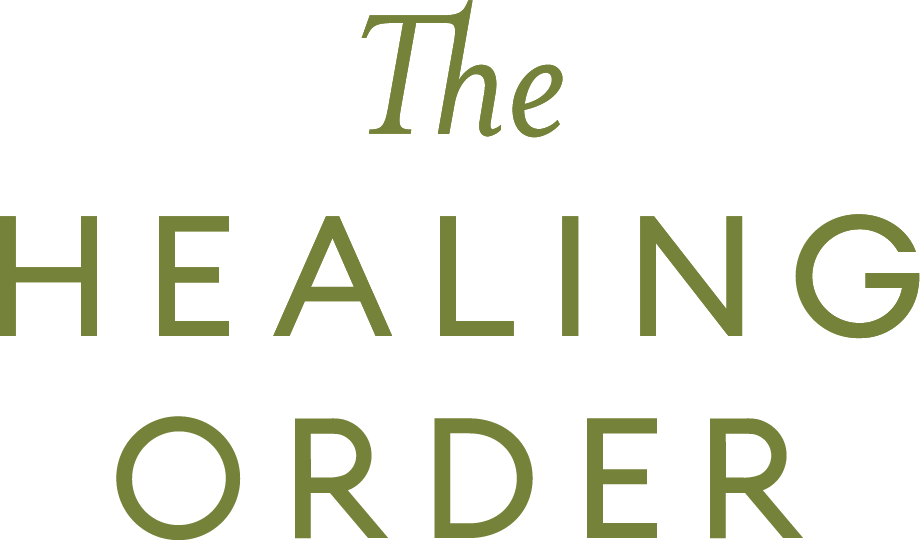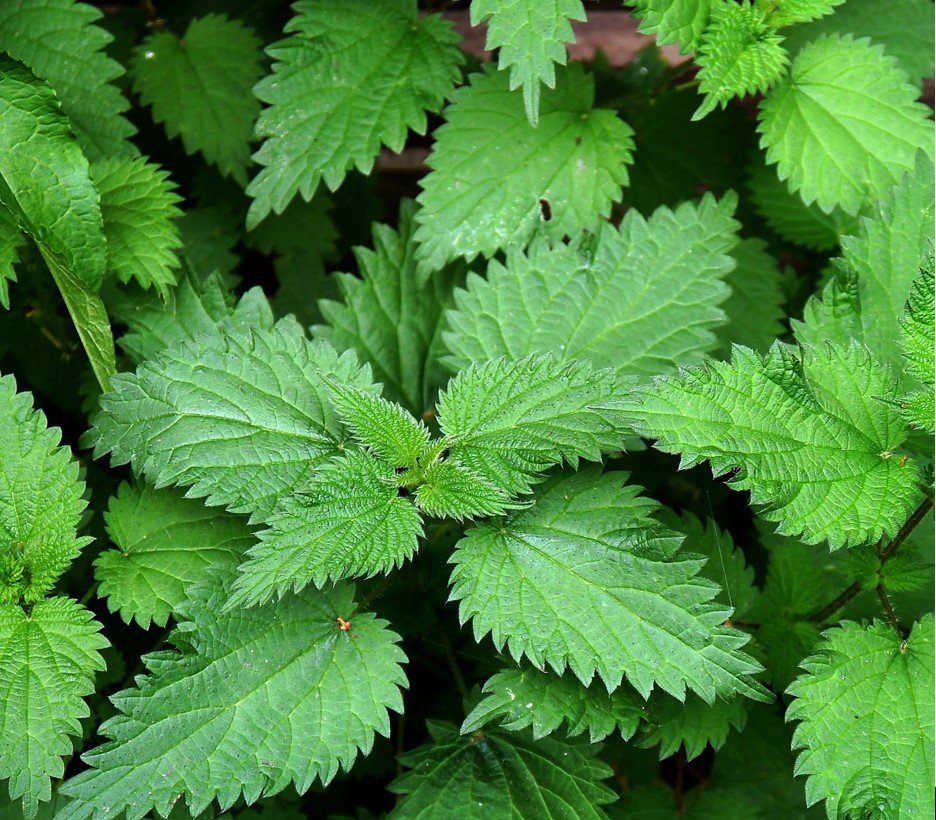Welcoming Spring with Herbed Nettles and Asparagus Risotto
By Ellen Goldsmith
“The months of the spring season
bring about the revitalization of all
things in nature. It is the time of birth.”
— Huangdi Neijing Suwen, The Yellow Emperor’s Classic of Medicine
The Spring Season
Welcoming spring is that wondrous time of year when the earth reawakens and the energy that has been deeply stored in the earth begins to push itself vigorously upward and outward, as seen in the first emerging shoots of plants and leaves. This is the initiation of yang qi in nature. It is a time of new beginnings and internal movements, when we can generate inner renewal and emerge from the darkness of winter to the light outdoors. We often feel stirred to clear out the old and do a bit of spring cleaning, both in our homes and our bodies. We want to shed the buildup and accumulation of winter — but not so fast. Spring is a highly changeable time. In Chinese medicine, spring is a time of “wind” — quick and unpredictable changes. One moment it is warm, then it is cold, then the winds and rain come. My grandmother always told me, “Don’t be fooled. Wear your jacket and keep it buttoned.” Internally, we need to do the same: “button up” our outer layer (our defensive qi), keeping it strong to promote and protect our emerging yang qi.
Spring: Move Your Qi
Spring is the liver’s time of year. The liver, in Chinese medicine, is responsible for promoting harmonious qi flow in all directions and throughout our body and organs. The liver stores and supports
the regeneration of the blood, which nourishes our muscles and tendons. As yang qi emerges, the body needs to dispel and disperse the excessive buildup that occurs in winter; coming out of winter, we need to mimic this movement internally and physiologically as well as externally in our physical activities to renew and stimulate revitalization throughout our being.
Spring is powerful and fragile, asking us to soften and become more receptive and relaxed. We need to cultivate our inner spring of growth and renewal.
Spring invites us to walk in the woods, relax and spend more time outdoors — walking leisurely, breathing in the fresh spring air and absorbing the newness and energy of spring.
Exercise should include stretching as well as movement to open up the muscles and loosen the tendons. It is still important that we protect ourselves from the changeable weather; the hard shell of winter is just beginning to crack open
Spring Foods and Herbs
In Chinese herbal medicine, we often use an herbal formula, Xiao Yao Wan (Free and Easy Wanderer) — typically made up of eight Chinese herbs, including dang gui (aka dong quai), mint and fresh ginger — to help relieve internal muscle tension and ease the liver qi. If you like a simpler tea try dried rose bud tea. Simply boil water and steep the dried buds for about 5 minutes. It is delicious, sweet, slightly warming, activates the liver qi (perfect for spring), and calms the nerves.
There are so many delicious bright and fresh new foods in early spring – chives, all types of rabe, baby carrots, turnips, beets, spicy greens to name several. Keep eating foods which are slightly warming in this changeable season. Nettles are one of my favorite spring herbs and foods to eat. See the recipe below.
RECIPE
Herbed Nettles and Asparagus Risotto
Nettles have a lovely, fresh vegetal taste with mineral notes. They make a wonderful partner to the grassy asparagus in this risotto.
Makes 6 servings.
Ingredients
3 cups chicken broth or vegetable broth 750 mL
2 tbsp avocado oil 30 mL
1⁄4 cup finely chopped onion 60 mL
2 cups arborio or short-grain brown rice 500 mL
1⁄4 cup dried nettles (or 2 cups/500 mL 60 mL chopped fresh nettle leaves)
8 oz asparagus, trimmed and cut into 1-inch (2.5 cm) pieces
1 tbsp grated lemon peel 15mL
1 tspn fennel seeds
1⁄2 cup minced mixed fresh herbs, such as basil, chives and/or parsley 125 mL
Salt to taste
Preparation Instructions
In a medium saucepan, combine broth and 3 cups water. Bring to a simmer over low heat. Turn off heat, cover and keep warm.
In another medium saucepan, heat oil over medium-high heat. Add onion and cook, stirring often, for 3 to 5 minutes or until translucent.
Stir in rice, a little bit of salt, and cook, stirring, for 1 or 2 minutes or until coated and translucent. Reduce heat to medium-low and, using a heatproof spatula, stir in about 1 cup (250 mL) of the warm broth. Cook, stirring almost constantly and scraping bottom of pan to prevent sticking, for 5 to 10 minutes or until no liquid remains.
Stir in 1 cup (250 mL) of the remaining broth, fennel seeds and nettles (if using dried). Cook, stirring almost constantly and scraping bottom of pan to prevent sticking, for 5 to 7 minutes or until no liquid remains.
Continue cooking, stirring and adding remaining broth, 1 cup (250 mL) at a time, as directed for 20 to 25 minutes total or until rice is just tender to the bite and has absorbed enough of the broth to be creamy but not soupy .
Add asparagus, grated lemon peel and nettles (if using fresh). Cook, stirring often, for 5 minutes or just until asparagus is tender. Stir in herbs and salt to taste.
Spoon into serving bowls. Serve immediately.
Tips
When risotto is cooking, it should bubble very gently. If you use up all the broth before the rice is tender, you can add hot water for the last few additions.
HEALTH TIP
Traditionally, nettles have been eaten and steeped to make teas to calm allergy and hay fever symptoms. They are cooling and a diuretic (astringent), with a sweet flavor.
Nettles are used in the West to nourish and build the blood; for example, in cases of anemia.
Asparagus is slightly warm and bitter. It can help to clear internal heat buildup (common with allergies) through urination.
The combination of nettles and asparagus in this soup will nourish the blood and yin.
To see more recipes, purchase Ellen’s book here or on Amazon here. Makes a great gift!
© 2017 All rights reserved: Nutritional Healing with Chinese Medicine: + 175 Recipes for Optimal Health, Ellen Goldsmith, MSOM, L.Ac., Dip.C.H., with Maya Klein, Ph.D.
CHINESE HERBALIST & LICENSED ACUPUNCTURIST
 Ellen Goldsmith is a nationally board certified, licensed acupuncturist and Chinese herbalist. Her integrative body centered and intuitive approach is grounded in decades of study and experience which are key to collaborating and working with people to help them reach their goals.
Ellen Goldsmith is a nationally board certified, licensed acupuncturist and Chinese herbalist. Her integrative body centered and intuitive approach is grounded in decades of study and experience which are key to collaborating and working with people to help them reach their goals.
She is known for her enduring confidence that each person has the power within to resolve challenges, grow and heal.
From working with AIDS patients in the 80s, to trauma survivors, to performing artists, to high functioning professionals, elders and young people, Ellen is deeply equipped to guide people through challenging issues.



